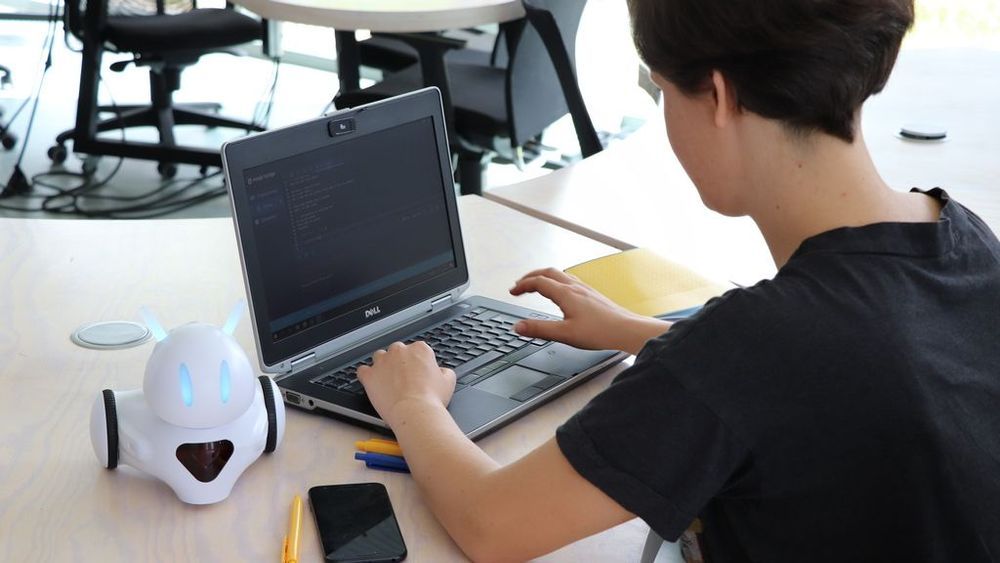Back to scenarios
Grades 6-8
6, 7, 8
Author:
Photon Education
Organizing Evidence, Race to the Details
English
Duration time:
60 min.
Robots:
x1
Programming interface:
Photon BadgePhoton BlocksPhoton Code

Back to scenarios

Reference to the core curriculum
Common Core English Standards: - CCSS.ELA-LITERACY.CCRA.R.6-8.1: Read closely to determine what the text says explicitly and to make logical inferences from it; cite specific textual evidence when writing or speaking to support conclusions drawn from the text. ISTE Student Standards: - Empowered Learning 1c: Students actively seek performance feedback from people, including teachers, and from functionalities embedded in digital tools to improve their learning process, and they select technology to demonstrate their learning in a variety of ways. - Creative Communicator 6c: Students communicate complex ideas clearly using various digital tools to convey the concepts textually, visually, graphically, etc.
Class goal:
Objectives:
- To infer answers to implicit questions using a text.
- To support answers using textual evidence.
- To rank evidence based on strength in supporting an answer.
Required items:
- 1 / 2 / 3 Photon Robot(s).
- Index cards or sticky notes.
Lesson scenario:
Programming Interface: Photon Draw / Photon Badge / Photon Blocks / Photon Code / Photon Joystick / MakeCode / Python / Scratch 2.0 / Scratch 3.0 (Photon Magic Bridge) / Scratch 3.0.
Preparation:
- Pre-teach strategies for breaking down questions.
- Pre-teach strategies for finding evidence in a text.
Lesson Sequence:
- The teacher poses the question:
- When you want to ask your family to go somewhere or get something new, what do you need to do to convince them you should go or have it?
- The teacher accepts responses as students volunteer answers.
- The teacher explains that to prove something, whether they should get something or an answer to a question, evidence is really important. It provides proof!
- The teacher poses the question:
-
- Do you think all evidence is equal in strength?
- The teacher accepts responses as students volunteer answers.
- The teacher explains that sometimes some details or evidence can be stronger than others and that usually, someone will want to hear evidence from strongest to weakest.
- The teacher explains that today’s lesson will revolve around answering questions and supporting answers with text details. In addition, students will be asked to consider presenting evidence that best supports an answer first.
- The teacher will read or reference a short familiar text.
- The teacher poses an implicit question (how, why) and asks students to identify two to three pieces of evidence each on a different card or sticky note.
- The teacher asks students to volunteer text evidence to be brought up to the front of the room.
- The teacher explains that a game will be played for students to code Photon to indicate the strongest piece of evidence. The group that codes Photon to arrive at the strongest piece of evidence first will win that round.
- The teacher explains that this process will continue until the weakest piece of evidence has been identified.
- The students are asked to code Photon to indicate light, sound, and sensor for arriving at a barrier (the card or sticky note).
- The teacher sets up and guides the rounds.
- At the end of the activity, the teacher presents a follow-up activity;
- Students all read the same text, identify textual evidence, and indicate order with Photon code.
- Students all read different text, identify textual evidence, and indicate order with Photon code (write details on cards).
- At the end, students move Photon to each piece of evidence indicating strength through code.
Added: 24-11-2022, by: Photon Education, Last update: 24-11-2022
Discussion (No comments)
Log in to start a discussion